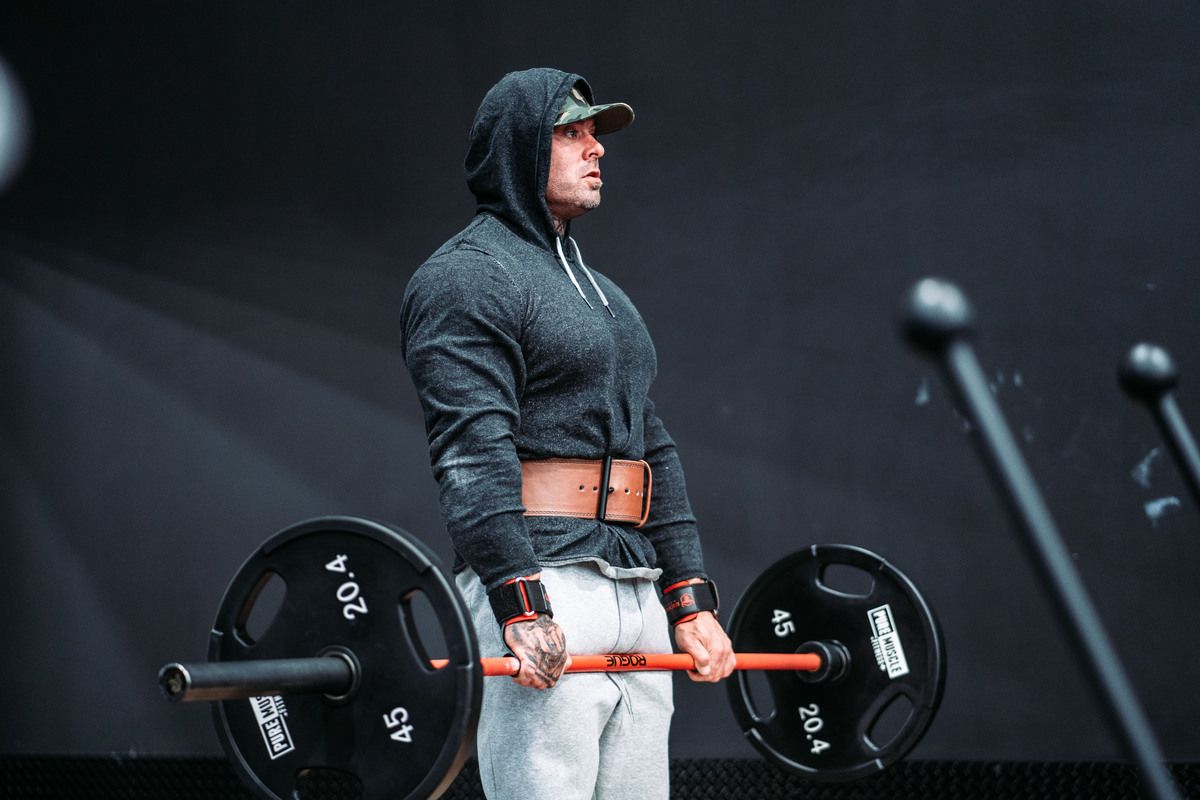The deadlift has become a very popular gym exercise in recent years. Back in the day, you'd only see powerlifters and bodybuilders pulling the heavy iron. But nowadays, it's being used by people with all sorts of fitness goals. As a result, more people are suffering back pain immediately after deadlifting. In fact, post-deadlift back soreness is so common that some people think it's unavoidable.
The truth is you don't have to put up with that aching pain. Lower back pain from deadlift sessions is commonly caused by poor form, excessive stress, or pre-existing weaknesses. All of those things can be fixed. In this article, we'll explore the causes of lower back pain after deadlift, discuss proper technique, provide prevention strategies, and address recovery and soreness management.
Causes of Lower Back Pain After Deadlift
Incorrect Form: When you perform deadlifts with improper technique, you put excessive strain on your lower back. This strain can lead to muscle imbalances, ligament strain, and joint irritation. Examples of poor form include lifting with a rounded back or leaning too far forward.
Excessive Stress: Another cause of lower back pain is subjecting your lumbar spine to excessive stress. This can occur when you lift heavy weights without proper strength and conditioning. Lack of activation of your glutes and hamstrings can also increase stress on your lower back.
Pre-existing Weakness or Injury: If you have pre-existing lower back injury or weakness, you'll be more likely to have pain after deadlifts. Previous lower back injuries or a lack of lower back muscle strength can make you more vulnerable to discomfort.
How to Fix Common Deadlifting Form Problems
Proper Technique: To prevent lower back pain during deadlifts, it's crucial to focus on proper technique and form. Here's a step-by-step guide:
- Get Your Setup Right: Stand with your mid feet under the bar, slightly less than shoulder-width apart.
- Grab the Bar: Bend over to grab the bar just wider than shoulder width. Push your shins to the bar.
- Lift Your Chest Up: Thrust your chest up while looking straight ahead. Look at a point on the ground about 10 feet in front of you.
- Take a deep breath, and then pull the bar up your legs to come to a standing position. Do not overextend in the top position.
Form Fixes
Keep your hips down: I often see beginners starting the deadlift with their hips too high. This makes it hard for the quads to contribute to the lift, putting too much strain on the lower back. Here are a couple of cues to help you get your starting hip position right:
- When you grab the bar, your elbows should make contact with your knees.
- Your shins should be slightly angled forward (not straight up and down).
Don't lift your hips too quickly: If you bring the hips up too fast, you'll force your lower back out of its natural position.
It will start rounding, which will put it in a weakened position. Here's a cue to avoid this: Keep the bar against your legs throughout the rep. Imagine dragging the bar up your body.
[RELATED: 5 Hacks to Improve Your Deadlifting]
How to Avoid Too Much Stress When Deadlifting
Your goal when doing the deadlift should be to place stress on your working muscles, which are your hamstring, lower back and glutes. But that doesn't mean you have to go 'balls to the wall' on every set. Here are three pointers that will help you program your deadlifts for maximum results and minimum pain:
Don't max lift every workout: If you're training for strength, you should be doing most of your working sets with 80-87% of your one rep max (1RM). You only need to train above 90% on a couple of sets per week and test your limit every fortnight or so.
If you're mainly training for muscle gain, you don't need to go under six reps, or 85% of your 1RM.
Schedule for recuperation: Schedule at least 72 hours between deadlifting sessions (i.e. Monday and Thursday). This will give your lower back muscles the needed time to recover and grow.
Use Back Down Sets: This involves doing your heaviest set first (after warming up) and then reducing the load by about 7% for three more sets. Here's what that might look like:
- Set One: 3 x 350 lbs.
- Set Two: 3 x 325 lbs.
- Set Three: 3 x 325 lbs.
- Set Four: 3 x 325 lbs.
[RELATED: Deadlifting Checklist: Use These Tips When You Deadlift]
Deadlift Back Pain Prevention
Taking just a few minutes to warm up, along with the right lower back strengthening exercises, can help prevent deadlift back pain.
Warm-up: Prior to deadlifting, it is important to perform dynamic stretching exercises targeting the lower back, hips, and hamstrings. This helps to increase blood flow to the muscles and improves flexibility. Dynamic exercises involve moving a muscle through its full range of motion.
Here are a couple of effective warm-up stretches:
Glute Bridges:
- Begin by lying on your back with your knees bent and feet flat on the ground, hip-width apart.
- Place your arms by your sides, palms facing down.
- Engage your glutes and lift your hips off the ground, creating a straight line from your shoulders to your knees.
- Hold this bridge position for a moment, focusing on squeezing your glutes.
- Lower your hips back down to the ground.
- Perform 10-12 repetitions, gradually increasing the range of motion and height of your bridges as you warm up.
Cat-Cow Stretch:
- Begin on your hands and knees in a tabletop position, with your wrists aligned under your shoulders and your knees under your hips.
- Inhale as you arch your back, lifting your head and tailbone towards the ceiling (Cow Pose).
- Exhale as you round your back, tucking your chin and tailbone (Cat Pose).
- Continue to flow between these two positions, inhaling for Cow and exhaling for Cat.
- Perform 10-12 rounds of this dynamic stretch, focusing on mobilizing your spine and engaging your lower back muscles.
Strengthening Exercises: Incorporating specific strengthening exercises into the training routine can help prevent lower back pain after deadlifts.
Here's my favorite lower back strengthening exercise:
- Stand with your back against a wall and feet shoulder width apart. Clasp your hands over your chest.
- Round your back as you curl forward to crunch your abs.
- Now arch your back as you return to the start position, feeling the squeeze in your lower back.
- Do 4 sets of 20 reps.
Wear a Weightlifting Belt
A weightlifting belt play a crucial role in preventing lower back pain after deadlifts and protecting against potential injuries. Weightlifting belts enhance muscle activation and performance during deadlifts. By increasing intra-abdominal pressure, the belt creates a stable torso and allows for a stronger, controlled lifting motion. This stability and activation of the core muscles, including the lower back, result in improved strength and reduce muscle soreness or pain.
While weightlifting belts are valuable tools, they should only be used on your heaviest sets. Over reliance on a belt will actually weaken your core, including your lower back.
[RELATED: Can a Weightlifting Belt Reduce the Risk of Low Back Injury?]
Back Pain Treatment
- Foam Rolling: Utilize a foam roller to target tight muscles in the lower back, glutes, and hamstrings. Roll slowly over the affected areas to release muscle tension and improve blood flow.
- Massage: Professional massage therapy can help relax tight muscles, reduce inflammation, and improve circulation in the lower back. Deep tissue massage and myofascial release techniques are particularly beneficial.
- Cold and Hot Therapy: Apply ice packs (cold therapy) to the lower back for the first 48 hours to reduce inflammation. Afterward, use heat pads or warm baths (hot therapy) to relax and soothe muscles, promoting healing.
- Active Recovery: Engage in low-impact activities like walking, swimming, or cycling to maintain mobility and blood flow without overloading the lower back. Gradually reintroduce deadlifts and other strength exercises once the pain subsides.
- Rest and Sleep: Ensure adequate rest and quality sleep to support the body's natural healing processes. A good night's sleep promotes muscle recovery and reduces pain.
Conclusion
You don't have to put up with nagging back pain when deadlifting. By understanding the root causes, fixing them and applying some simple preventive measures, you can lift pain free. Here's a key point recap:
- Proper Technique is Key: It all starts with getting your setup right. Keep your mid feet under the bar, grab it with a slight bend in your knees, and maintain neutral spine alignment.
- Avoid Excessive Stress: Don't go all out in every workout. Program your deadlifts smartly, and remember, it's not about maxing out every time.
- Warm-Up and Strengthen: Warm-up with dynamic stretches targeting the lower back, hips, and hamstrings. Strengthening exercises like Romanian deadlifts and back extensions can keep your lower back happy.
- Belt Up Wisely: Weightlifting belts are your friends, but use them wisely, especially on your heaviest sets.
Now, go hit the gym with confidence, apply these tips, and bid farewell to that troublesome back pain. Your deadlifts will be stronger, safer, and more enjoyable. Take charge and lift like a pro!






